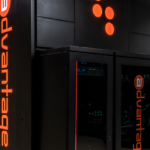NLP business trends: automation and insights up for grabs

|
Getting your Trinity Audio player ready...
|
Natural language processing (NLP) – tools and techniques that allow computers to understand spoken words and written text – is moving up the priority list in many companies and organizations. A survey of 150 NLP adopters based in Europe and the US, commissioned by Expert.ai, found that 77% of companies expected to increase their investment. Natural language processing models help firms in two key areas in particular – automation and insight – which underpin NLP business trends.
Preserving outstanding customer experience
Understanding customer needs is central to running a successful business, and employees who excel at this are highly prized. But as their success drives growth, one of the downsides is that capable staff can find themselves being swamped with client queries. And if this overload is allowed to persist, firms risk bottlenecking progress.
NLP solutions are proving to be valuable in triaging incoming questions, providing automated answers where appropriate, and directing queries to the right team. Picking up on current NLP business trends, having solutions that can connect to robotic process automation (RPA) platforms, such as those offered by Blue Prism and UiPath is proving to be a winner. Such integration means that some tasks can be checked off the ‘to do’ list with little or no staff overhead required.
Tools address both scalability and process inefficiency issues. They can be ideal for repetitive operations such as copy and pasting, routine file management, and looking up information on the web, to give just a few examples. “RPA automation enables users to create bots by observing human digital actions,” explains Automation Anywhere, another RPA provider, on its website. “Show your bots what to do, then let them do the work.”
Rise of the software robots
With its origins in the 2000s, the RPA sector today is well-established and has the capacity to deliver savings in the millions to clients in banking, healthcare, insurance, life sciences, manufacturing, and the public sector. For large organizations especially, the efficiency gains are impressive. But the benefits of software robots extend beyond just trimming operational costs. Automating tedious tasks is a big win for staff morale, allowing employees to focus their talents on higher-value and more rewarding duties.
RPA can also reduce errors, improving customer satisfaction scores. In healthcare, using software robots to maximize resources has the potential to be transformative in boosting patient outcomes. NLP and related systems can help in other ways as well.
For example, it’s worth asking the question – how much of your company’s knowledge is stored in email inboxes? It’s surprisingly common for firms to be only utilizing a fraction of their available insight. Recent NLP business trends highlight the potential for machine learning algorithms and AI tools to parse huge volumes of business data. Highly scalable, software can make light work of gathering insights so that companies don’t have to leave future growth opportunities on the table.
Green concerns and AI understandability
Convinced of the plus points of NLP business trends, our attention now turns to the concerns, which are well articulated by those advocating for responsible AI. Headline-grabbing large language models such as GPT3, which has shot to fame through its offshoot, ChatGPT – a spookily capable chatbot created by OpenAI, have a large energy footprint. And the potential environmental cost of NLP development could be an issue, depending on where the electricity powering those GPUs whirring away in the cloud comes from.
Another key aspect is understandability. Operational data may tell you that NLP tools are working, but do you know how they are working? Machine learning models – which are capable (by definition) of carrying out tasks that they were not explicitly programmed for – can be hard to explain. And when machines become responsible for recommending loans, insurance, and other products, vendors can run into issues.
Customers will want to know why an application or claim was rejected. And it’s hard for firms to demonstrate that their processes are fair if they’ve become reliant on hard-to-fathom black box technology. To be fully accepted, AI systems deployed by organizations should be explainable and accountable.
Hybrid platforms
Companies investing in NLP tools will also want to know that solutions are scalable and have the prospect of ramping up on benefits. The upfront commitment in time and money can be significant, and confidence in the technology will be dented if systems become derailed by issues. During development, algorithms will need monitoring. And a number of startups are emerging to deal with thorny topics such as model bias.
Finally, it’s interesting to note that companies developing their NLP tech stack are often taking a multi-solution approach. “Most NLP projects will benefit from the flexibility of a hybrid AI platform that integrates symbolic and machine learning AI techniques to achieve the success metrics most valuable to each use case, such as explainability, scalability and accuracy,” comments Marco Varone, Expert.ai’s founder and CTO, summing up on trends driving NLP investment and innovation.










